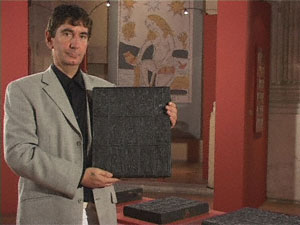



In 1760, Nicolas Conver engraved in pear wood the most important Tarot de Marseille of the last few centuries. In fact, having recovered part of the initiatory Tradition of the Tarot de Marseille thanks to its masters, this deck reestablishes the Tradition by restoring different codings (of colours, of numerological and symbolic systems). The Tarots of the preceding generations no longer contained some of these codes, because of a carelessness which afflicted the master card makers Marseilles over several generations, one of the causes of which was the king’s official authorization in 1631 for the Marseillans to print playing cards.
The playing cards that were printed in Marseilles for centuries before this royal authorization had the reputation of being the best of the known World. The initiatory tradition of the Tarot de Marseille was preserved then by a secret brotherhood, whose illegal manufacture of the cards to be played by the Marseillans supported this secrecy.
The perfection with which he engraved the Tarot de Marseille on pear wood leaves us to think that he had a perfect hand, because the perfection of some of the facial expressions approaches a kind of transcendance. However, the trancendence of expressions showed through equally in the Tarot de Marseille of François Tourcaty, as if it was the Tarot as a whole that revealed itself to generation upon generation through the most inspired of its different authors. Just to study the faces of the characters by the various engravers of the time would occupy several years of the life of a contemplative monk. Here also we meet up with a mystery that we cannot solve through simple words, but simply point to it with a question: who then were the models who served for drawing the different figures, and where did they come from?
Philippe CAMOINLogged in visitors: 27